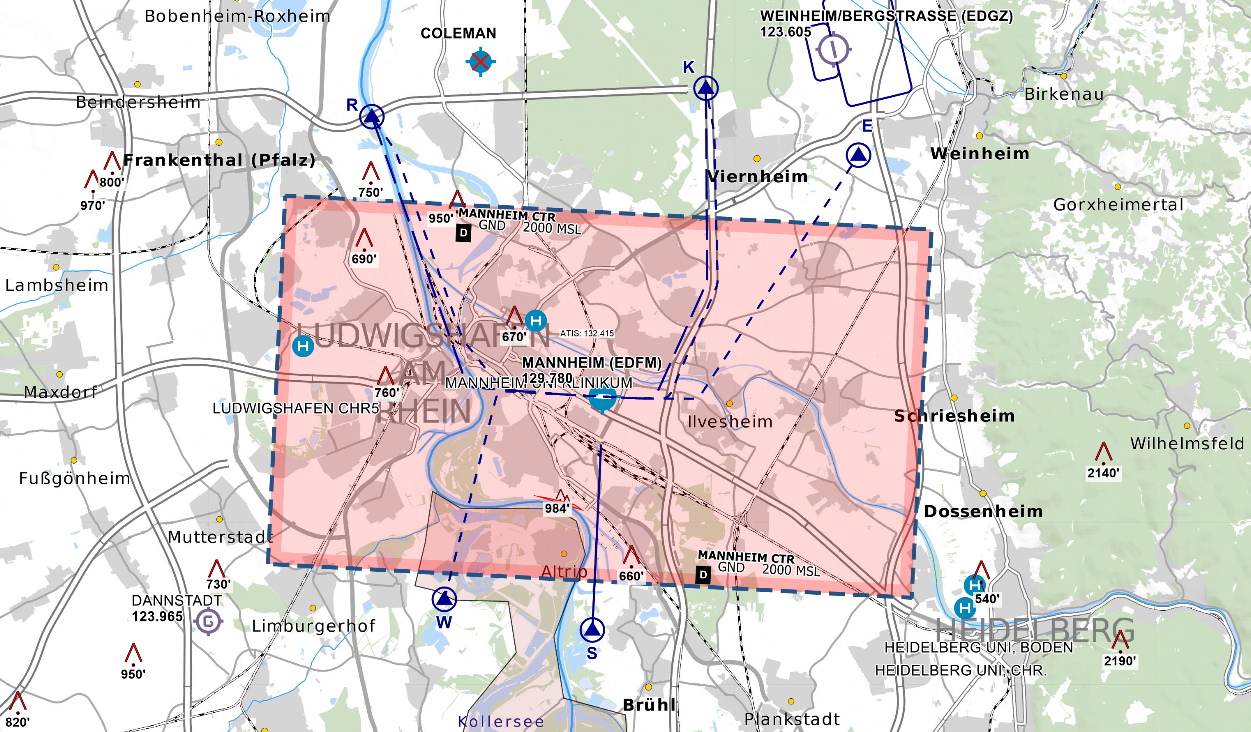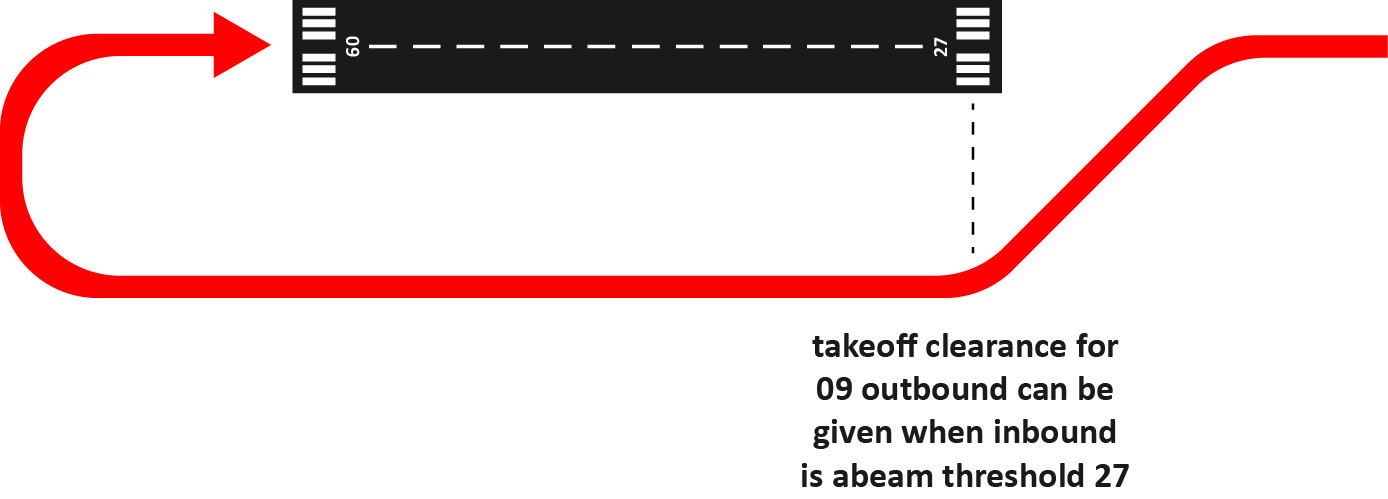Tower
The Mannheim CTR(HX) is a class D airspace from ground to 2000 ft MSL.
 CTR Mannheim/City - © openflightmaps.org
CTR Mannheim/City - © openflightmaps.org
Due to the small size of Mannheim/City, there are restrictions on which aircraft types can be flown at the airport:
- Airplanes up to 10.000 kg MTOW
- Donier 328-100 (D328)
- Dash 8-100 and 300 (DH8A, DH8C)
- ATR 42-500 (AT45)
- Falcon 50, 2000, 900 EX/DX (FA50, F2TH, F900)
- Challenger 300 (CL30)
- Cessna 680 (C680)
- Embraer Legacy 450, 500 (E450, E500)
Pilots flying unsuitably large aircraft (e.g. A320/B737) should be reminded about the small size of the airport and its short runway length. However, pilots flying aircraft that are not part of the above list, but similar in size and performance (e.g. C700) can usually still be accepted in the VATSIM environment.
Additionally, the grass runway can only accommodate aircraft up to 5.700 kg MTOW (all German aircraft registrations except D-Axxx, D-Bxxx, and D-Cxxx).
Parking Positions
Preferred parking for Airlines are the two taxi-out positions in front of the Terminal. Other aircraft can be parked either at the positions 1-5, the hangars or at the grass area. For refueling the gas station east of taxiway A is used.
IFR Procedures
Instrument approach procedures are only available for runway 27: a localizer approach and an RNP approach. Due to its lower minima and higher lateral precision, the localizer approach is preferred.
Departure Spacing
Two aircraft on the same SID require a minimum spacing of 5 NM.
Visual circling
Since the instrument approach procedures are only available for runway 27, IFR arrivals need to fly a visual circling maneuver during 09 operations. This maneuver is only allowed South of the airport.
To ensure separation between inbounds and outbounds, a takeoff clearance for a 09 departure can only be issued once the inbound has passed abeam the threshold of runway 27.
To remind pilots that they need to fly a visual circling, they should be asked to report breaking off or when reaching the right downwind.
ATC: JMP902, report breaking off.
ATC: JMP902, report right downwind.
In the event of a go around, the pilot is expected to rejoin the right downwind and from there join the published missed approach procedure. However, since many pilots on VATSIM will be unfamiliar with the details of visual circling procedures, they should be told what to do:
ATC: JMP902, join right downwind runway 09.
And once the aircraft is on right downwind runway 09:
ATC: JMP902, follow the published missed approach procedure.
VFR Procedures
Traffic circuits
Due to noise abatement, the Southern traffic circuit should be used whenever possible. The Northern traffic circuit should only be used if the Southern one is unavailable. Additionally, VFR aircraft are expected to avoid overflying the cities of Mannheim and Ludwigshafen as well as the surrounding villages.
Reporting point
| Reporting point |
Use |
Location |
| R |
Exit to the NW (27 ops) Entry from the NW (09 ops) |
highway A6 bridge over the Rhine river |
| K |
Exit to the N (09 ops) Entry from the N (27 ops) |
highway intersection A6 and A67 |
| E |
Exit to the NE (09 ops) |
highway intersection A5 and A659 |
| W |
Exit to the SW (27 ops) |
between lakes North of Waldsee |
| S |
Exit to the S |
between Brühl and Rhine river |
Auto-Handoff
Mannheim utilizes an auto-handoff procedure for IFR departures where Tower will not hand off outbounds to the approach/center controller. Make sure to set the correct departure frequency in the ATIS.
Outbounds should contact APP/CTR immediately when airborne unless explicitly told to remain on Tower frequency.

